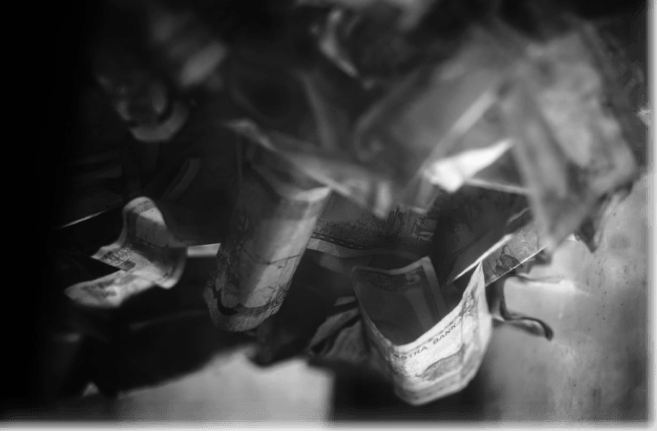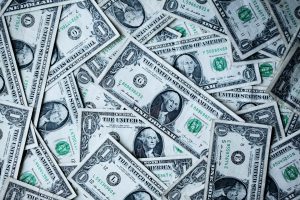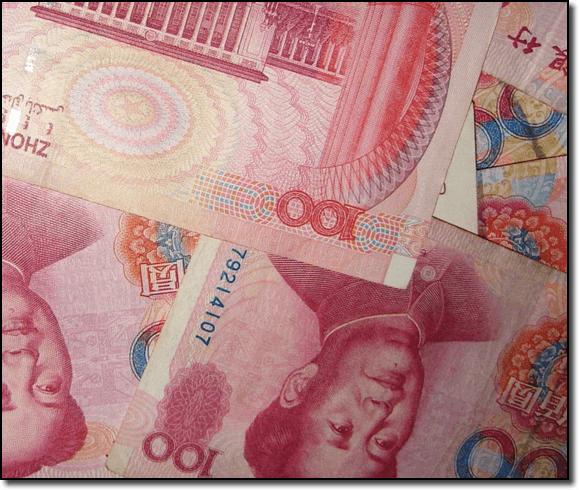Table Of Contents
If you ask the average person if they know what the official money in China is, chances are they’ll tell you it’s the Yuan. But what if you give them multiple choices? Add the Chinese Dollar and the Renminbi. “China has a dollar?” “The Ren- what?” Even with these two choices, most if not all will confidently tell you “It’s the Yuan”.
It’s not Yuan!
At this point, you might want to take advantage of what you already knew: the answer is not the Yuan. This could be the easiest $10 you’ll ever make in your life! But be careful someone might just know the correct answer as you do.
The correct answer? China’s official money is not the Yuan but the Renminbi. Count the number of dropped jaws and exclamations of “What?” when you reveal the answer. A survey conducted by HQ Trivia found out that of the 800,000 respondents, a staggering minority, 8%, answered “Renminbi”.

For years, the Yuan has always been referred to as the official money of China. How many times have you heard the word “Renminbi”? Maybe you’re reading about it for the first time here.
See The Best Options For Travel Money & Transferring Money To China:
The Official Money Name: Renminbi
“Complicated”. That’s probably the way you’re thinking about the status between the Chinese Yuan and the Renminbi. Let’s learn more about the currency by referencing the Great British Pound or GBP. Similar to the case of the Yuan and Renminbi for China, you’ve often heard the GBP referred to as the official money of the United Kingdom or UK along with the Pound Sterling.
People’s Central Bank of China
The association between these two currency names i is the same as that between the Pound Sterling and the GBP. In the same way that the GBP is a unit of the Pound Sterling, the Yuan is likewise a unit of the Renminbi. The international foreign exchange markets have labelled “RMB” as the code for the Renminbi and it is widely accepted as China’s official money. Like other countries, China’s central bank the People’s Bank of China (PBC) is the only entity that can manufacture and release notes and coins to the public.
US Dollar To Chinese Renminbi

Up until 2005, the PBC had the value of the Renminbi set to the US Dollar. However, when the government of China decided to adapt a market-based economy, the PBC moved to have the Renminbi devalued. The reason for this is that under a market-based economy, a weaker currency makes your exports more competitive. A lower valued currency also gives the country comparative advantages in labor and cost of capital.
Eventually, the PBC adapted a floating currency policy which subjected the value of the Renminbi to the natural forces of supply and demand. This was in 2006. Seven years later, in 2013, the Renminbi was the eighth most heavily transacted currencies in the foreign exchange market. Two years later in 2015, the Renminbi became the fifth most heavily traded currency in the world.
Currency Manipulation
For some time now, the US has called out China for practicing and engaging in unfair trade. The US has cited China’s policy of devaluing the Renminbi to gain trade advantages for its exports. Market analysts believe China has under-valued the Renminbi for up to 37.5 % of its real value.
History Of The Currency & Historic Names
Before the time of the ROC of Republic of China, there were several currencies circulating in China. These were referred to as “Yuan”. However, different names were used to set them apart. These names included “The Gold Yuan”, “The Silver Yuan”, and Fabi which means “Legal Tender”.
The Renminbi was finally introduced by the PBC in December of 1948. However, it was only circulated in paper form. This was during the time of hard line Communist rule in China. There were different forms of currency that were circulating at this time.
As the Chinese Civil War drew to its conclusion, China’s Communist Party or the CPC had already spread its influence in various locations throughout the country. In response, the PBC began to issue moneys that were in line with the regions that were under the control of the Communist Party.
The new moneys being circulated were called Yuan. The currencies were differentiated by terms such as “People’s Bank of China Banknotes”, “New Currency”, “People’s Bank of China Notes”. The Renminbi introduced as “The People’s Currency”. This period of the new moneys lasted up to July of 1949.
Learning All About The Yuan
There is a lot of confusion between the Renminbi and the Yuan. A big reason lies in how the currency is abbreviated in the currency market. The Renminbi’s ISO4217 code is the same as that of the Yuan which is CNY.

To add to the confusion even the moneys of Japan and Korea are referred to with the symbol of the Yuan. The US Dollar is labelled Mel-Yuan while the Euro is called the “Ou-Yuan”
Be that as it may, the Renminbi remains China’s official money. Don’t let anyone try to convince you that the official currency of China is the Yuan!
Value Initially Set To Mexican Peso
In 1889, China’s monetary authority set the Yuan’s value to that of the Mexican Peso. During the first few years of the 1890s, banks that did business in China which included the Imperial Bank of China, were circulating paper money. These bills were in Yuan. The money was denominated in the following figures: 1, 2, 5 and were referred to as jiao. Meanwhile those with these denominations: 1, 2, 5, 10, 20 were called Yuan.
The Canton Coin
You’ve probably come across the word “Canton”. These were the coins that were produced at the mint located at Guangdong. The Canton were made of silver and had the following denominations: 5 cents and as jiao they had the 1, 2, 5 and plus 1 Yuan.
The government of China which had adopted its centralized form in 1903, began to produce currency for the Yuan. These coins were denominated according to the type of metal. 1 Cash was named after brass. Meanwhile, 2, 5, 10, 20 Cash were identified with Copper. For jiao, it was 1, 2, 5 and Silver for 1 Yuan.
The CPC discontinued the circulation and issuance of paper money in 1936. Eventually, in 1948, the CPC began producing and circulating money for the government. As the CPC took over more regions nationwide, the government started to issue a new form of money. It was a bank note that was denominated as a Yuan.
China issued a new type of Yuan in 1955 whereby the value of one unit was set at 1000 of the old version of the Yuan. What was this money called? Yes, it was the Renminbi. And it is still the official money of China.
The Differences Between The Chinese Yuan And The Renminbi?
Are you unsure of what the official currency of China is? If so, you are not the only one. The question “What is China’s currency called?” has been a popular mainstay in Trivia Night. The answer will no doubt leave everyone stumped. So what is the official currency of China? If you answered “the Chinese Yuan”, you are wrong!
The official currency of China is the Renminbi. It is pronounced the way it is spelled: Ren – Min – Bi. Translated into English, “Renminbi” means “People’s Money” or the “People’s Notes”. The Renminbi is abbreviated as “RMB” in the foreign currency market. If the Renminbi is the official currency of China, what is the Yuan? We hear the Yuan mentioned more than the Renminbi.
In the same way that the Dollar is the base unit for the United States Dollar or USD, the Yuan is the base unit for the Renminbi. This is how the monetary authorities have structured China’s currency system. It is no different from how the United Kingdom differentiates its currency. Is it the Pound or the Sterling? In the U.K, the Pound and its smaller counterpart, the Pence are units that measure the value of the Sterling.
Here is how China’s currency system pegs its money versus the US Dollar:
- RMB = US Dollar
- Fen = Cent
- Jiao = Dime
- Yuan = Dollar
This is where people get confused between the Renminbi and the Yuan. As you can see the Renminbi is pegged to the US Dollar, but so is the Yuan. If you have 100 RMB the value will be the same as 100 Yuan; you have the same amount of money.
Following the examples of the United States Dollar and the British Pound, the Yuan is the unit that is used to measure the Renminbi. As the official currency, China would refer to the Renminbi in matters of monetary policy. For example, China can revalue the Renminbi but not the Yuan. However, wage rates are referred to as Yuan and not Renminbi because rates are measured or referenced in Yuan.
Here are 2 things to remember when trying to differentiate the Renminbi from the Yuan:
- Outside China; refer to the currency of China as the Renminbi
- Inside China; when it comes to valuing the cost of a product, refer to it as a Yuan
Another way to think of the difference is to remember how you phrase the value of items in the United States. If you ask for the cost of a large coffee, the cashier would say “5 bucks”. In China, the cashier would say “5 Yuan”.
To sum up, the official currency of China is the Renminbi. The money is produced and circulated by the People’s Bank of China and is considered sole legal tender in the country. A unit of Renminbi is measured in Yuan and in smaller denominations, the jiao, and the fen. In terms of conversion:
- 1 Yuan = 10 Jiao
- 10 Jiao = 100 Fen
The Yuan is referred to by the Chinese as Kuai, the Jiao as Mao and the Renminbi is distributed in notes and coins. The following are the denominations in terms of banknotes: 1, 2, 5, 10, 20, 50, and 100 Yuan and 1, 2, 5 Jiao For coins, the denominations are 1 Yuan, 1, 2, and 6 Jiao and 1, 2, 5 Fen. The Renminbi is abbreviated as RMB.
Similar to other global currencies, the Renminbi’s value is pegged to the United States Dollar. As China moved from a centralized economy to a free market economy, its share in the foreign exchange trade increased. The Renminbi was devalued by the Chinese government in order to increase the competitiveness of the country’s exports.
For the reason that the Renminbi was not allowed to float according to market forces, its currency exchange rate is perceived to be lower than its actual purchasing power parity. Currency exchange analysts believe the Renminbi is undervalued by 37.5%.
To Sum It All Up
So let’s get it straight once and for all. The Yuan is not the official money of China. It is the Renminbi. Not even the Yen which believe it or not has been mistaken as China’s official money. People should not be faulted for being confused. Currencies are part of a nation’s history. Like everything else, it undergoes changes. As a matter of fact, the Kanji which is the currency symbol for the Japanese Yen has its origins from the Yuan.
Now that you know, raise your hand if the question is asked during a trivia challenge in your office or in a bar while out with your friends!